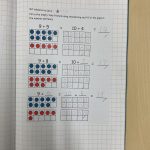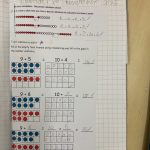🔢 Building Fluency with Rebalancing in Maths
This week in maths, our Year 2 learners have been developing their mental fluency by exploring a new strategy called rebalancing.
Rebalancing helps us make tricky additions like +9 or +11 much easier. Instead of working it out the long way, the children have learned to use their existing knowledge of ten and some more. For example, when adding 9, we can take one away to make a ten first turning 7 + 9 into 6 + 10. It’s all about keeping the equation balanced while making the numbers simpler to work with!
To bring this concept to life, we’ve been using concrete manipulatives such as bead strings and tens frames with counters. These hands-on tools help children see how numbers can be rearranged and balanced, supporting their understanding before moving on to mental strategies.
Through this practical approach, the children are strengthening their number sense and building confidence in their mental maths fluency. It’s been wonderful to see so many “light bulb” moments as pupils discover quicker, smarter ways to work with numbers!
💡 How Parents Can Help at Home
Here are three simple ways you can support your child’s learning:
-
Play “Make Ten” Games
Use everyday items like buttons or cereal pieces. Ask, “How many more do we need to make ten?” This helps children strengthen their understanding of number bonds. -
Use Real-Life Maths Moments
Encourage your child to add or subtract small numbers when shopping, cooking, or setting the table. For example: “We have 9 apples, how many will we have if we buy 2 more?” -
Practise with a Number Line or Beads
Draw a simple number line at home or use a string of beads. Practise moving one bead to make 9 into 10 or 11 into 10 to show how rebalancing works.



